It's March In The Garden 
We had another mild winter and plenty of sunshine so the plants think it is already spring! We worked the front yard for a couple of days getting it back into shape! We had to get the beds back into shape!

The other reason we had to work so hard on the garden is that "Tomatomania" is coming to Roger's Gardens in Corona Del Mar! Tomatomania! kicks off another spring season with an event that's become our source of interesting tomatoes and the largest garden event of the year at Roger's Gardens.
It opens Friday the 4th and goes three days! We find everything we need to have a perfect season (including over 175 varieties of tomatoes).

OK, so we were orsing around
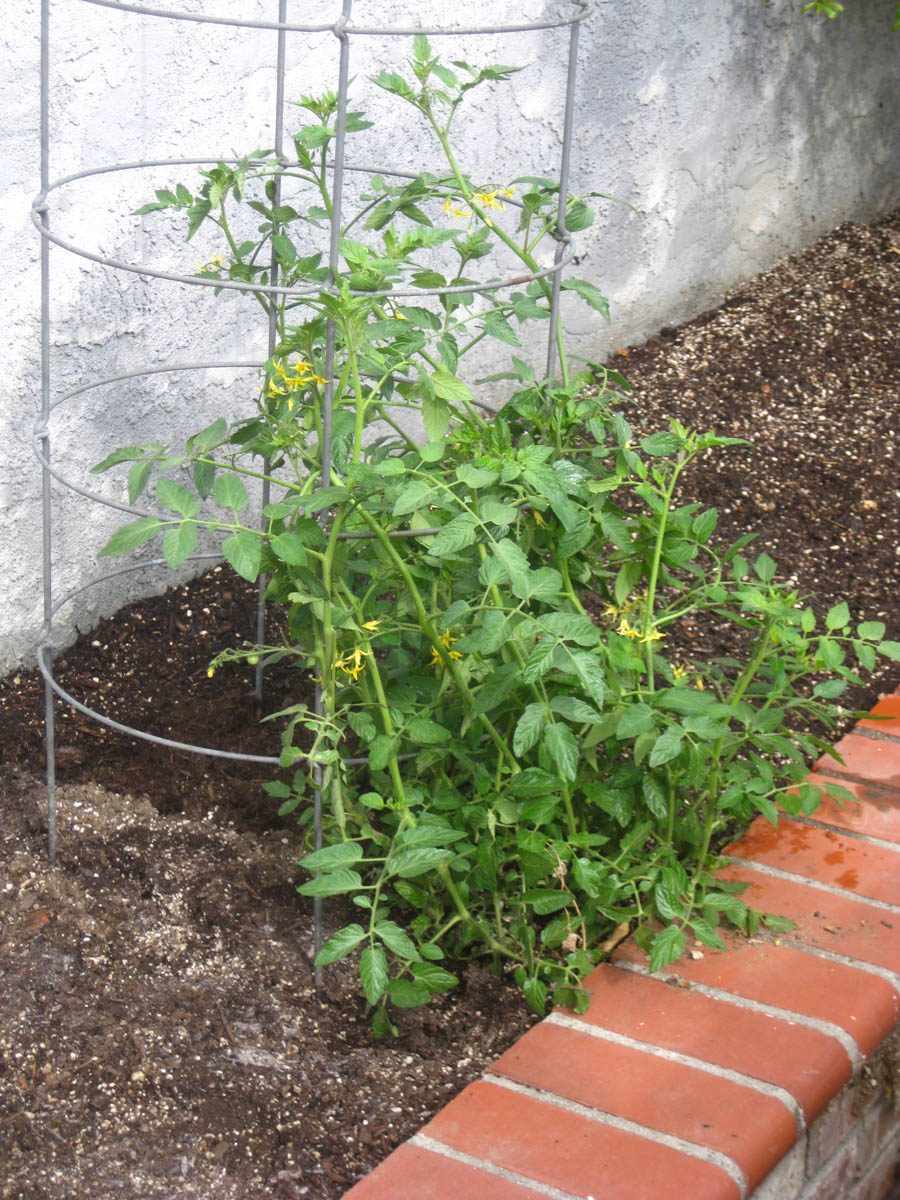
A volunteer tomato from last year... It already has small tomatoes on it!
Last year this tomato grew so large it ended up in the orange tree
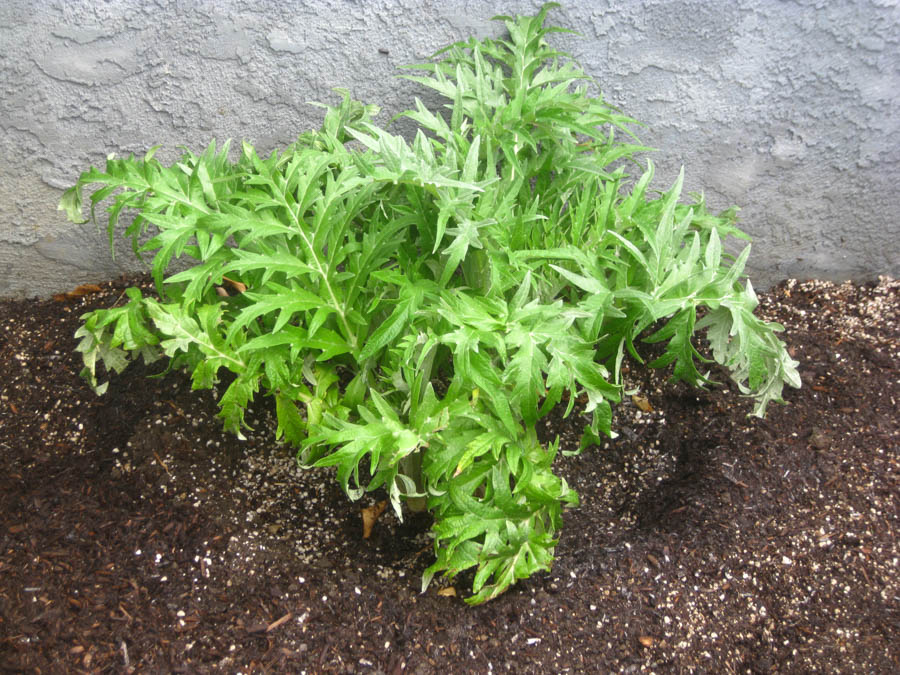
The Artichoke look pretty good! He got new mulch and a good feeding!
Did You Know? - The artichoke was first developed in Sicily and was known to both the Greeks and the Romans. In 77 AD the Roman naturalist Pliny called the choke one of earth's monstrosities, but many continued to eat them. Historical accounts show that wealthy Romans enjoyed artichokes prepared in honey and vinegar, seasoned with cumin, so that this treat would be available year round.
It was not until the early twentieth century that artichokes were grown in the United States. All artichokes commercially grown in the United States are grown in California.
In 1947, Marilyn Monroe was crowned the first Queen of the Artichokes!

Not ours... Vicky's yellow tree is a real standout

Swiss Chard is starting to grow
- The plant has numerous monikers,
including silverbeet, Roman kale, and strawberry spinach.

Our apple tree is beautiful!
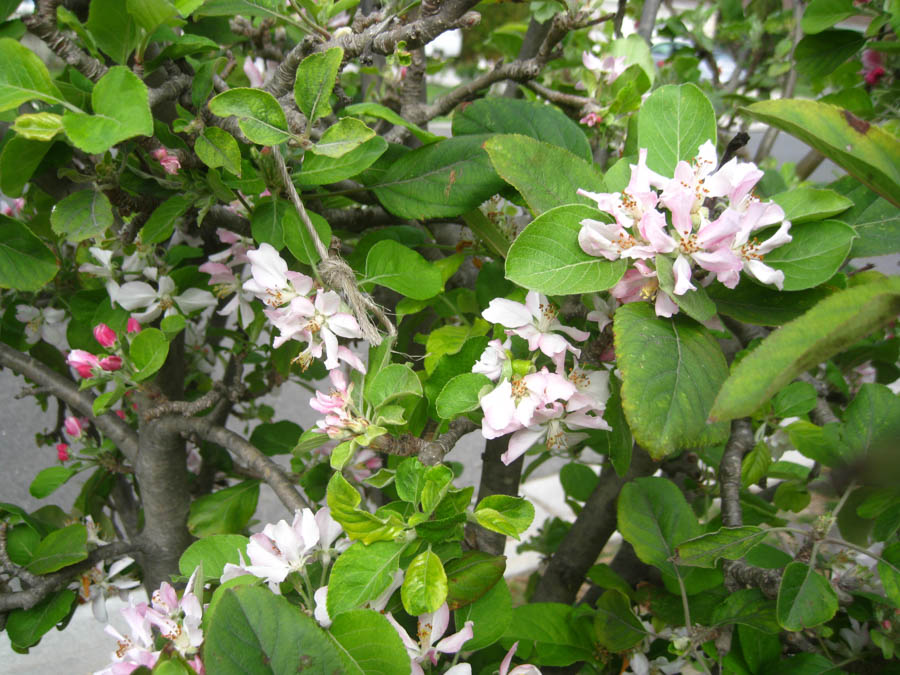
Blossoms are on two of the three apple types grafted onto this tree!
Did You Know? - Grafting or graftage is a horticultural technique whereby tissues from one plant are inserted into those of another so that the two sets of vascular tissues may join together. Apple trees are typically propagated by grafting because seeds do not produce true-to-type varieties.
The top part of the graft is the variety of apple that will produce the fruit and is called the scion. The bottom part is called the rootstock and forms the roots. The choice in rootstock is determined by the special characteristics it offers. Some grafts are done to produce dwarf forms of apple trees; other times it is to take advantage of creating disease-resistant trees.
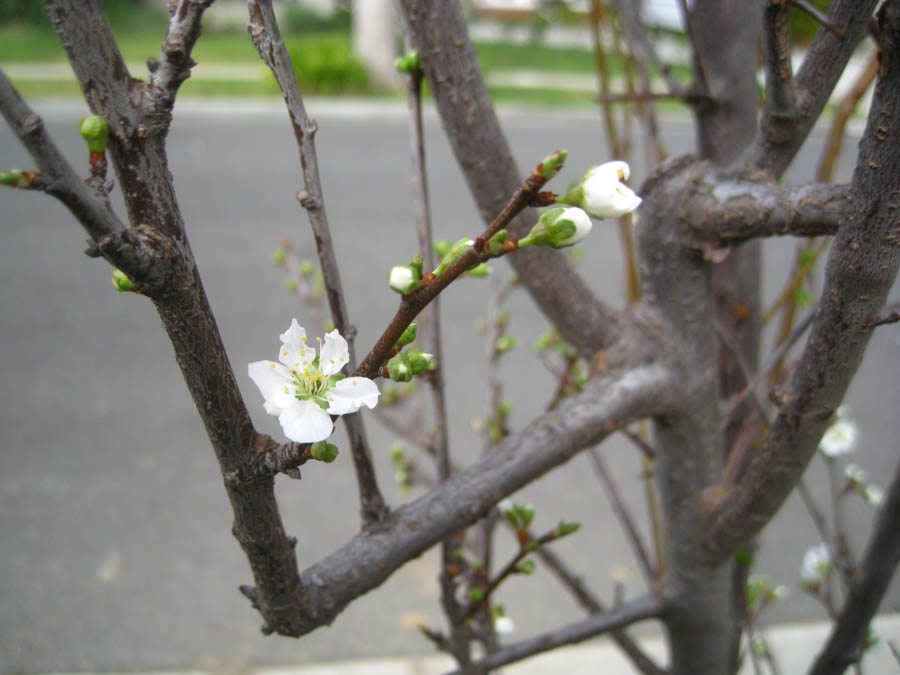
The plumb tree is coming out of its dormancy
 Plumbs will be here soon!
Of every blossom has fruit, we are in trouble!
Plumbs will be here soon!
Of every blossom has fruit, we are in trouble!

Our new little avocado tree seems to be happy!


Another 30 days and we will be having potatoes
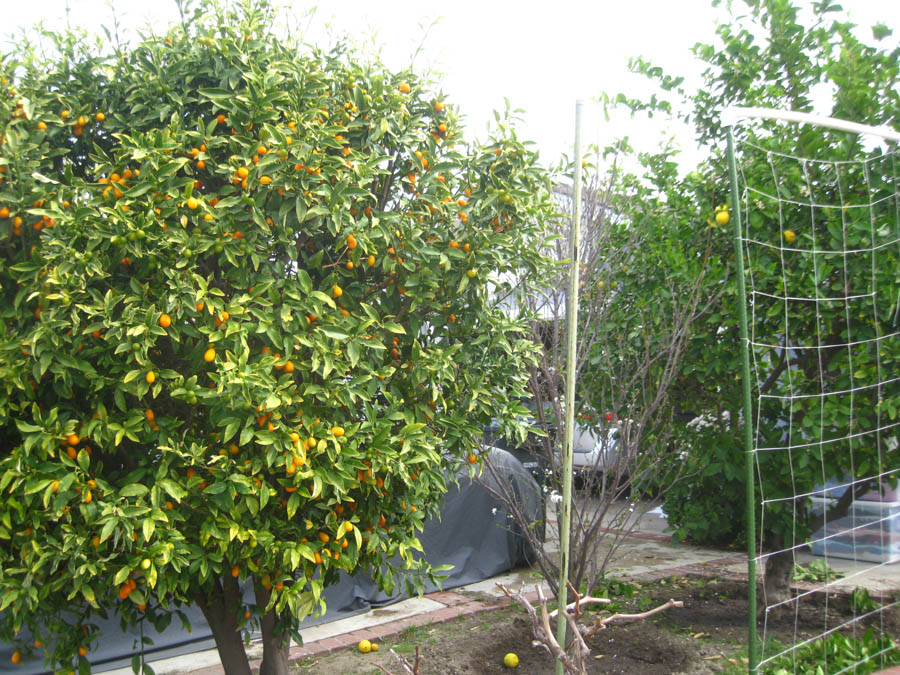
Kumquat,
plum, and lime down the driveway

Shelling peas are growing strong

The fruit trees are loaded with blossoms and fruit!
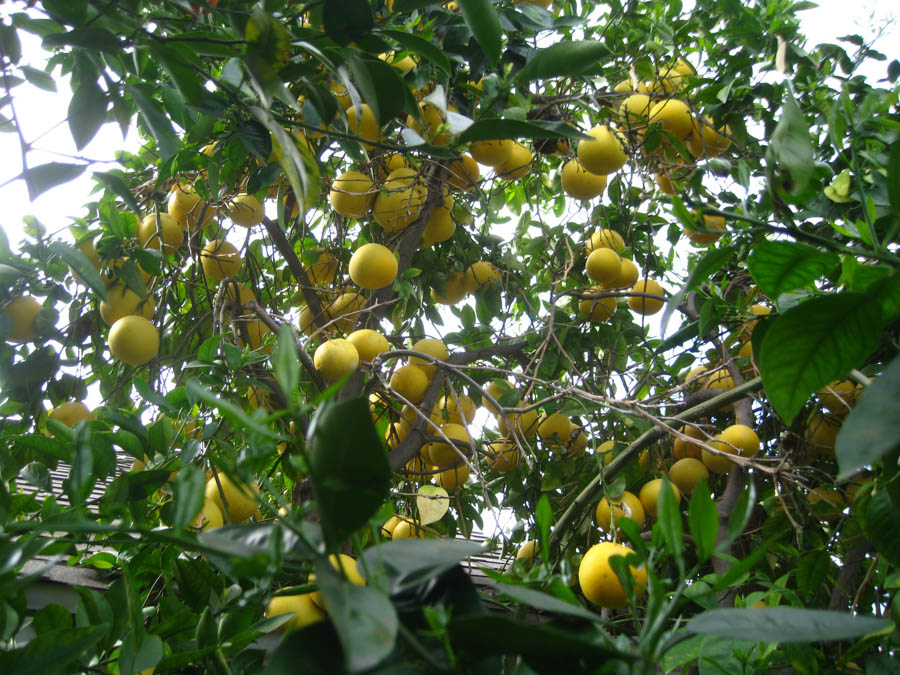
The grapefruit tree had hundreds of fruit on it this year!
Did You Know? - All citrus fruits originated in the Old World, except grapefruit. Grapefruit originated sometime in the late 18th-century in the Caribbean. No one knows for sure, but it is probably a natural mutation of the pomelo and another citrus fruit.
- Grapefruit are hand-picked, no mechanical harvesting is used.
- Grapefruit trees can produce for 30-40 years.
- The United States produced 1.23 million tons of grapefruit in 2006.
- A Frenchman, Count Odette Phillipe, planted the first grapefruit trees in Florida around Tampa Bay in 1823. Today, Florida produces about 1/3 of the world's grapefruit. (1998).
- World production of grapefruit is almost 6 million tons, the United States produces over 60% of this total.
- Some mature grapefruit trees can yield up to 1500 pounds of fruit in a season.
- The average yield is 350 pounds.

Orange juice almost every day!
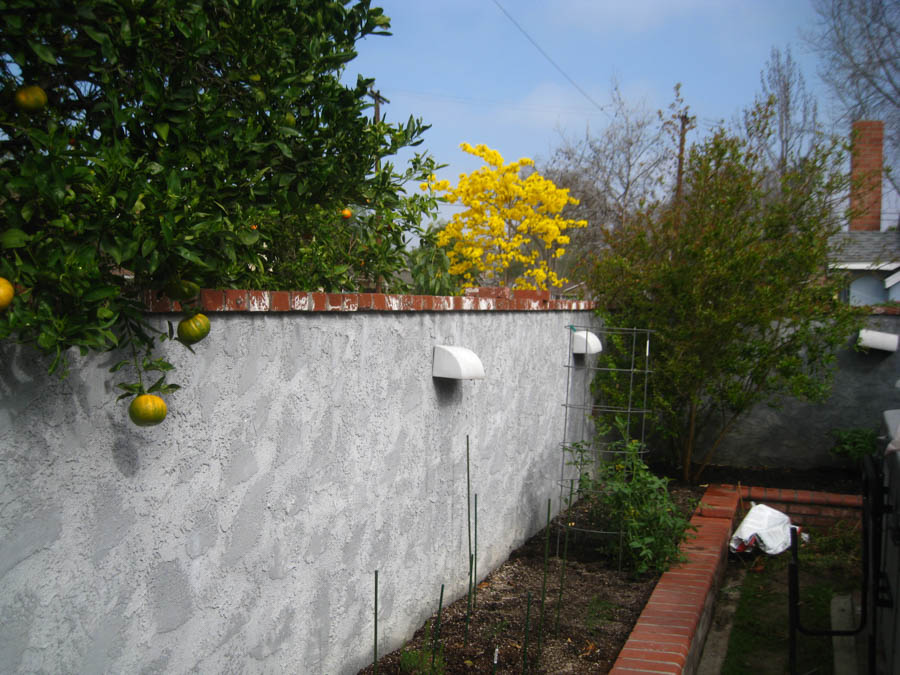
The beds are clean up, mulched, and fertilized... Awaiting veggies!
(Also awaiting Paul's back to feel better)

The lemon tree needs to be shortened!
The Back/Side Yards Are Producing Well!

The nectarine tree is loaded with blossoms
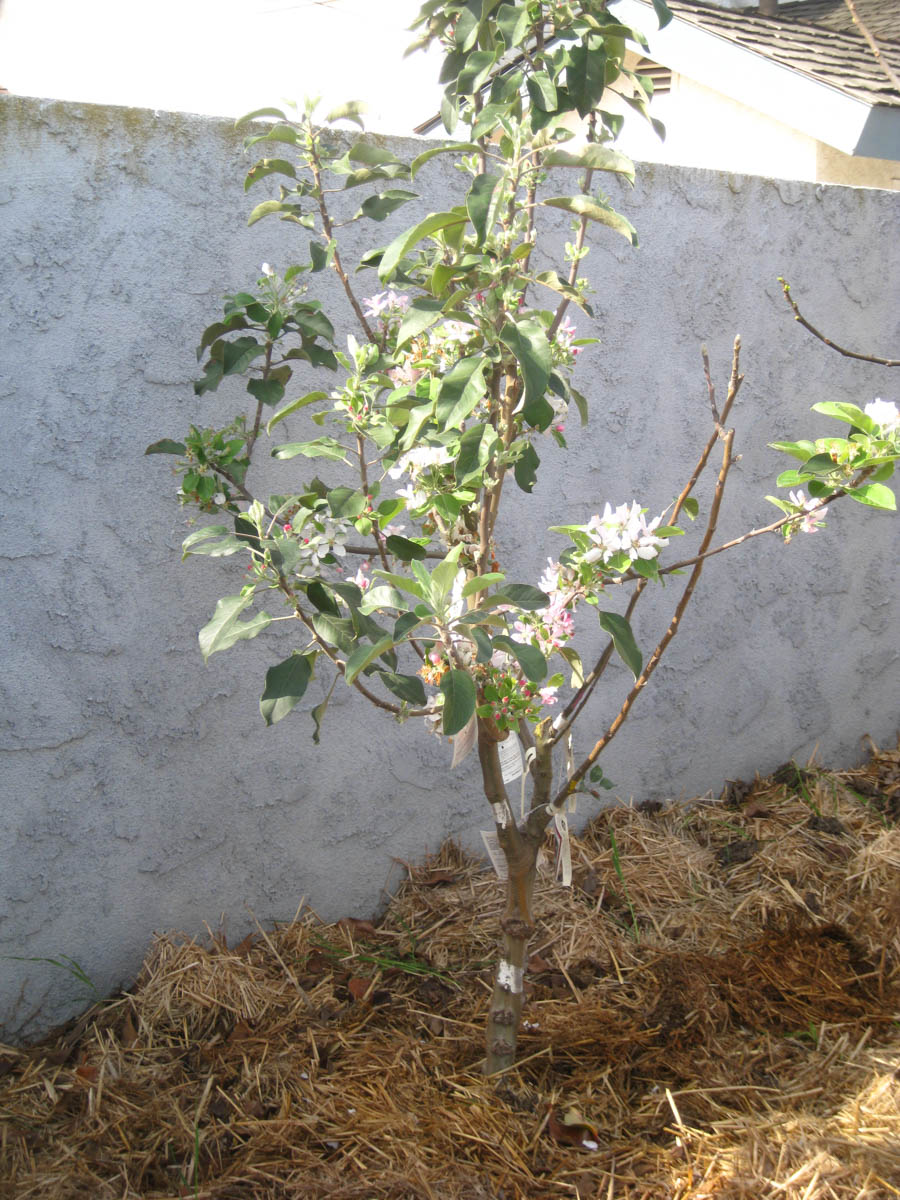
Our new apple tree is also loaded with potential apples
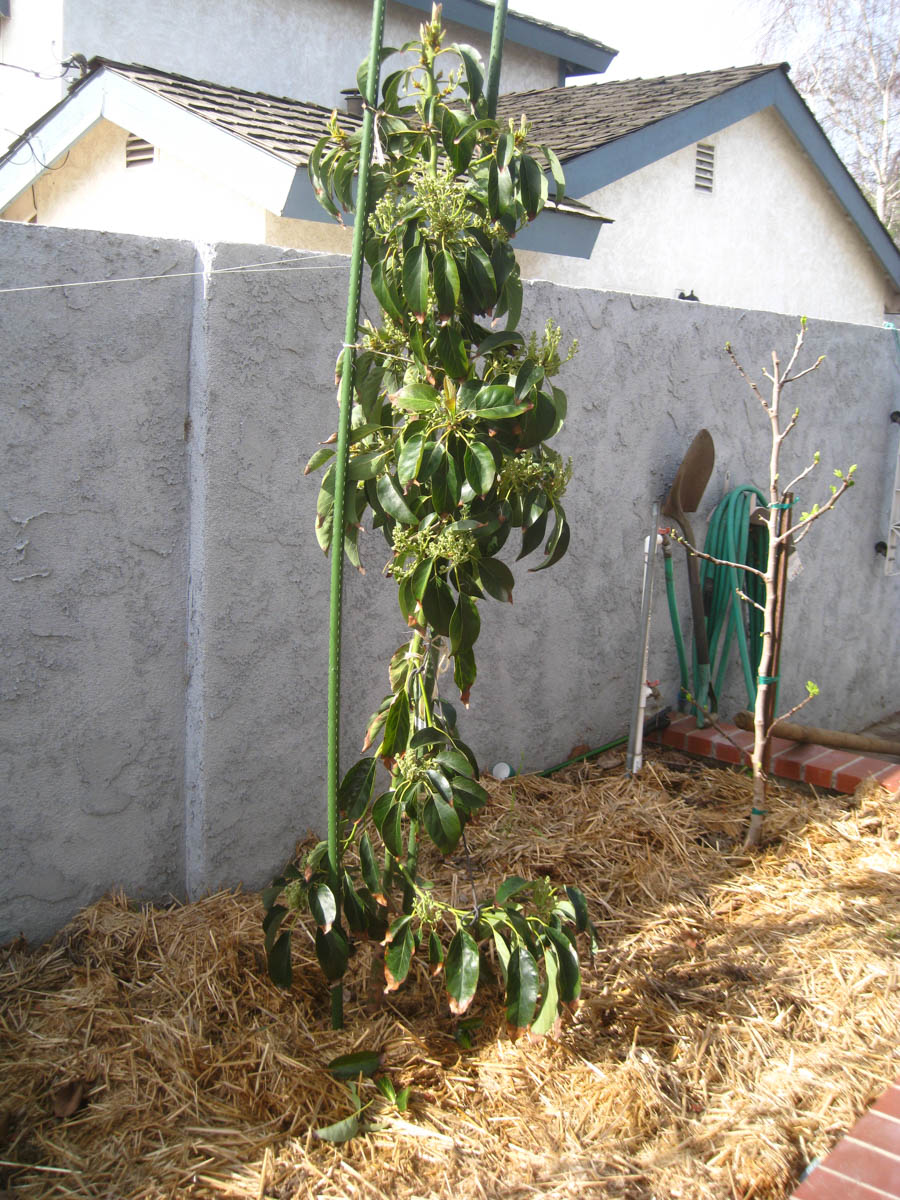
The avacado is loaded with avacados while the fig already has tiny figs on it
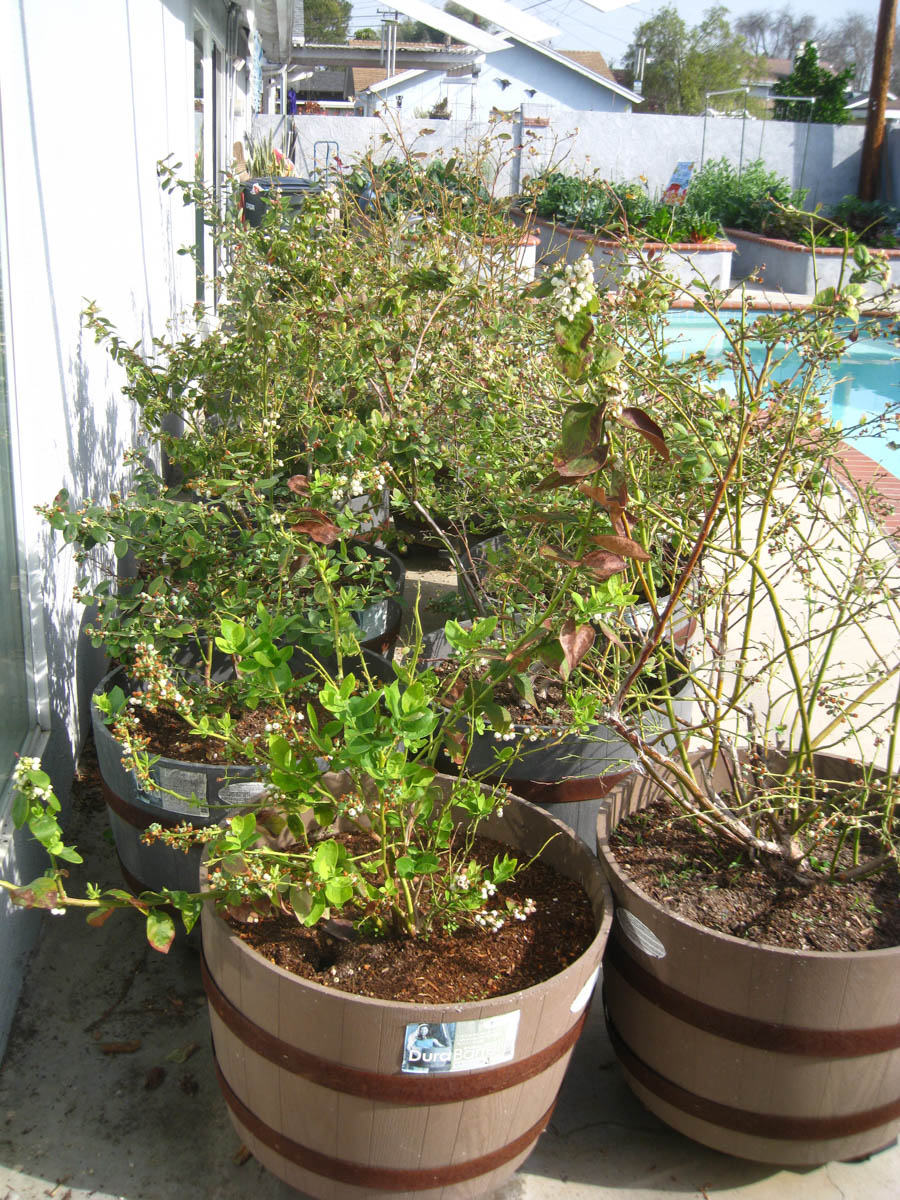
The blueberries are doing just fine
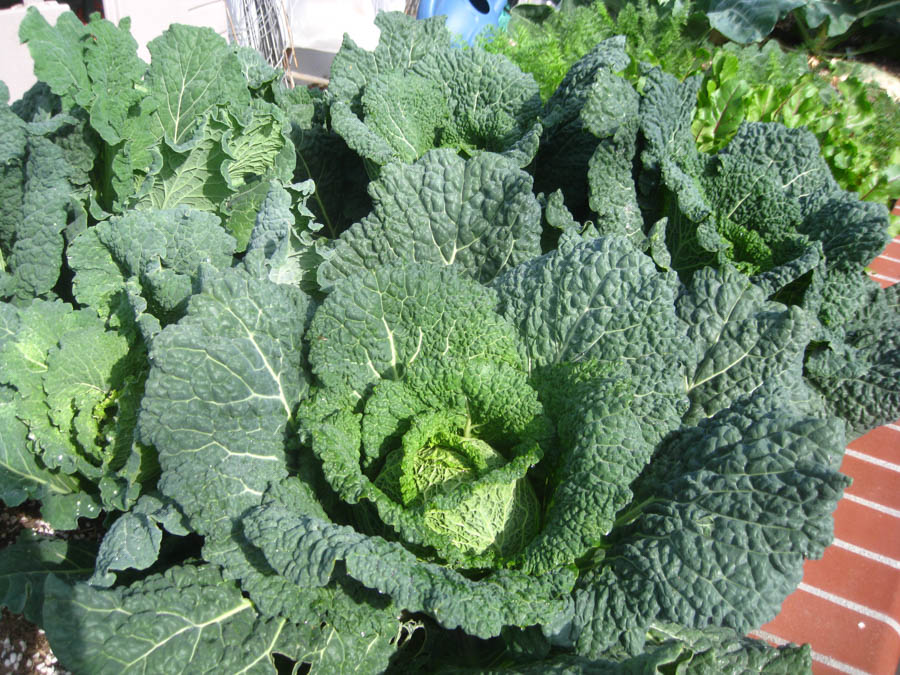
Come on St. Patrick's Day... We cabbage ready! Savoy Cabbage at that!
Did You Know? -
Despite this rough appearance, the leaves of the savoy cabbage are tender, even when eaten raw. This makes them an ideal choice for salads, vegetable wraps, or as a bed for rice, fish, or other dishes. This in sharp contrast to the leaves of "green" or "red"cabbages, that are hard and rubbery. Their only real use, in the raw state, is in making coleslaw. Even then, the texture can be too tough for many people to enjoy. On the other hand, savoy cabbage can make a tastier, and much more tender coleslaw.
As a side note, the terms "green" and "red" cabbage, refer to specific types of cabbages. Green cabbage is the typical hard, rubbery cabbage that most people are familiar with. Red cabbage is also fairly common. It is also hard and rubbery, with a slightly bolder flavor, than the green, and is most often used for the color contrast, rather than for the flavor. These are both high in many nutritional factors. Unfortunately, due to their texture and taste, people use them sparingly in their raw state. They become more tender, and less bitter tasting, when cooked, but they lose a lot of nutritional value in the process.

Open up and let's see what is inside!

Beautiful!

More cauliflower
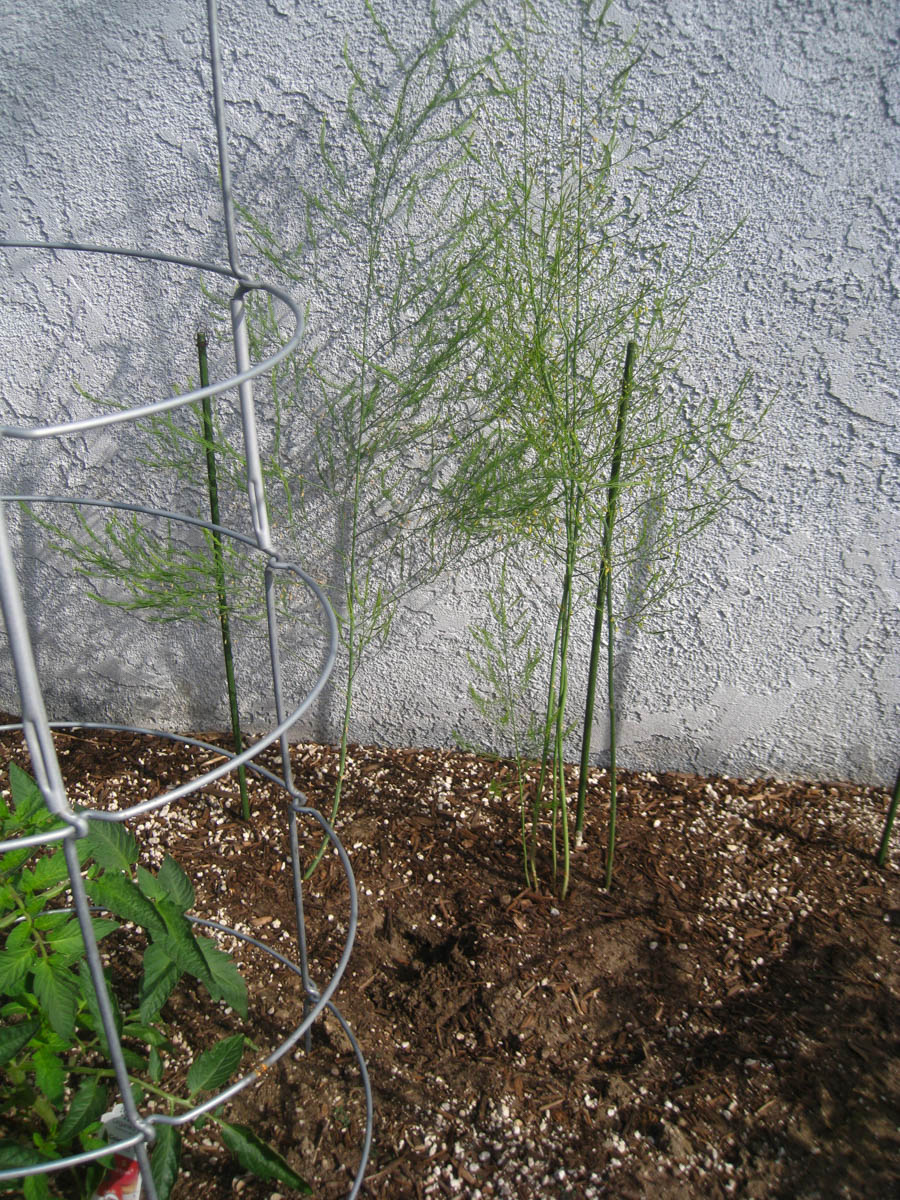
The asparagus is popping right out of the ground

First of the tomatoes seem to be doing well!

The kale is beautiful... We made kalechips
last week

Brussel Sprouts have to be watched carefull! The Aphids are always lurking
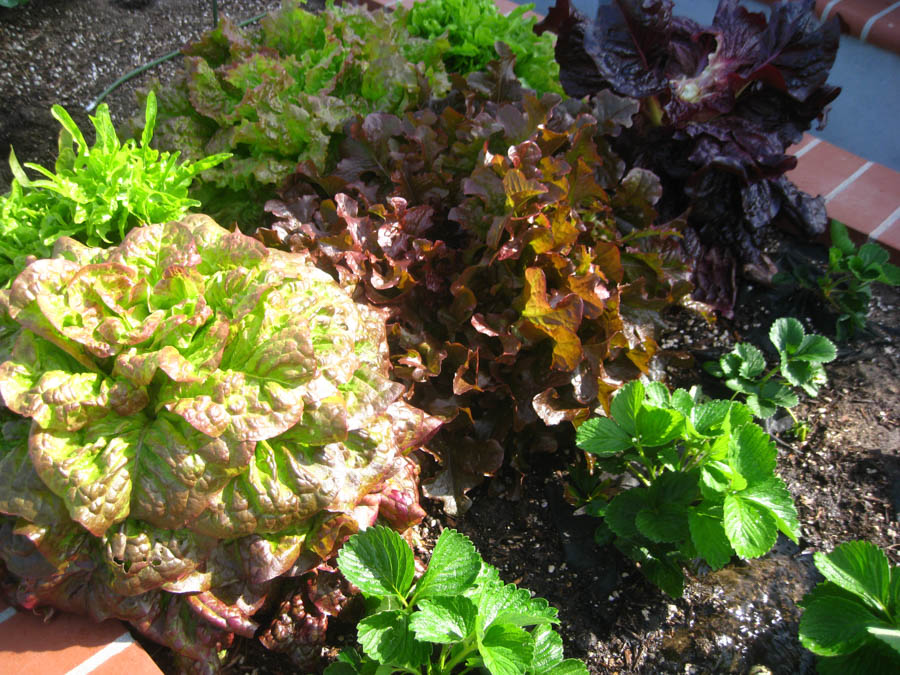
Salad anyone?

The peas are plumping

Sue has a small herb garden right outside the kitchen

March 3-6 Was Busy!
So we are off to Tomatomania at Rogerts Gardens. Welcome to Tomatomania!, not only a must-have link to hundreds of heirloom and hybrid tomatoes, but a huge community of enthusiastic fellow tomato lovers and the world's largest (and most fun) tomato seedling sale! It's what the New York Times called, "the tomato freaks' Woodstock," and if you're crazy about tomatoes, this is the event for you!
Started in the early 90s at Hortus, a trend-setting nursery in Pasadena, California, today Tomatomania! includes classes, sales events, tomato tastings, and impromptu social gatherings at popular nurseries and gardening hotspots from coast to coast.
Leading the team of tomatomaniacs is Scott Daigre, owner of Powerplant Garden Design based in Ojai, California. A dedicated home gardener, Scott shares his love of digging in the dirt through event appearances, speaking engagements, books, and videos that offer tools and tips for amateur and veteran gardeners alike.
Tomatomania! events are each unique, with the largest and longest running California sale welcoming thousands of tomato lovers to a three-day extravaganza showcasing more than 300 heirloom and hybrid tomato varieties. Featuring everything from pots and fertilizer to stakes and enthusiastic expert advice, our events are the one-stop shop for growing great-tasting tomatoes in your own backyard. It's a crazy celebration of America's favorite garden vegetable.

"Look out tomatoes, here we come!
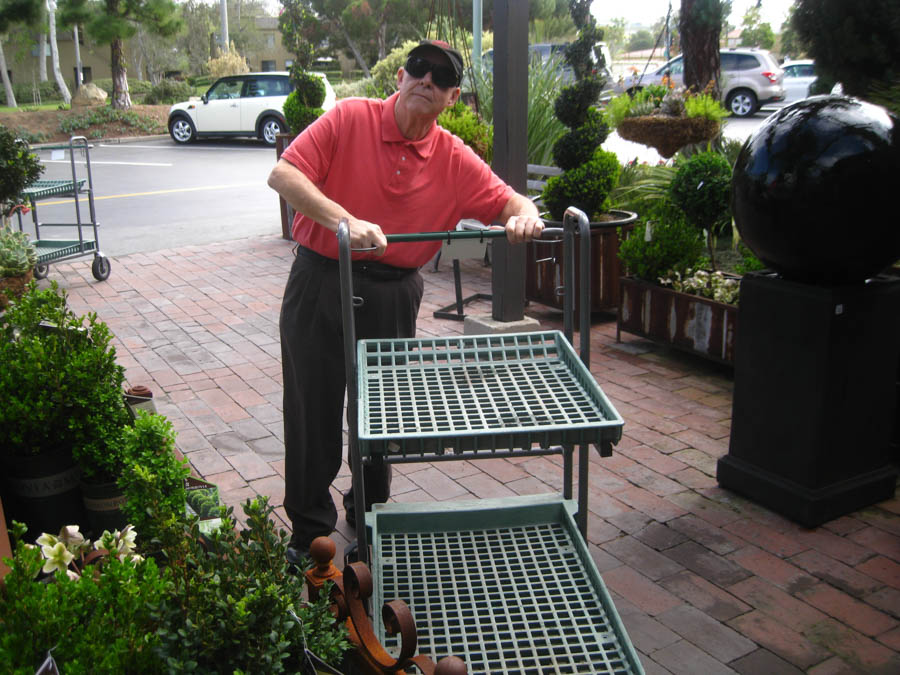
Soon to be full!

We got there opening morning!
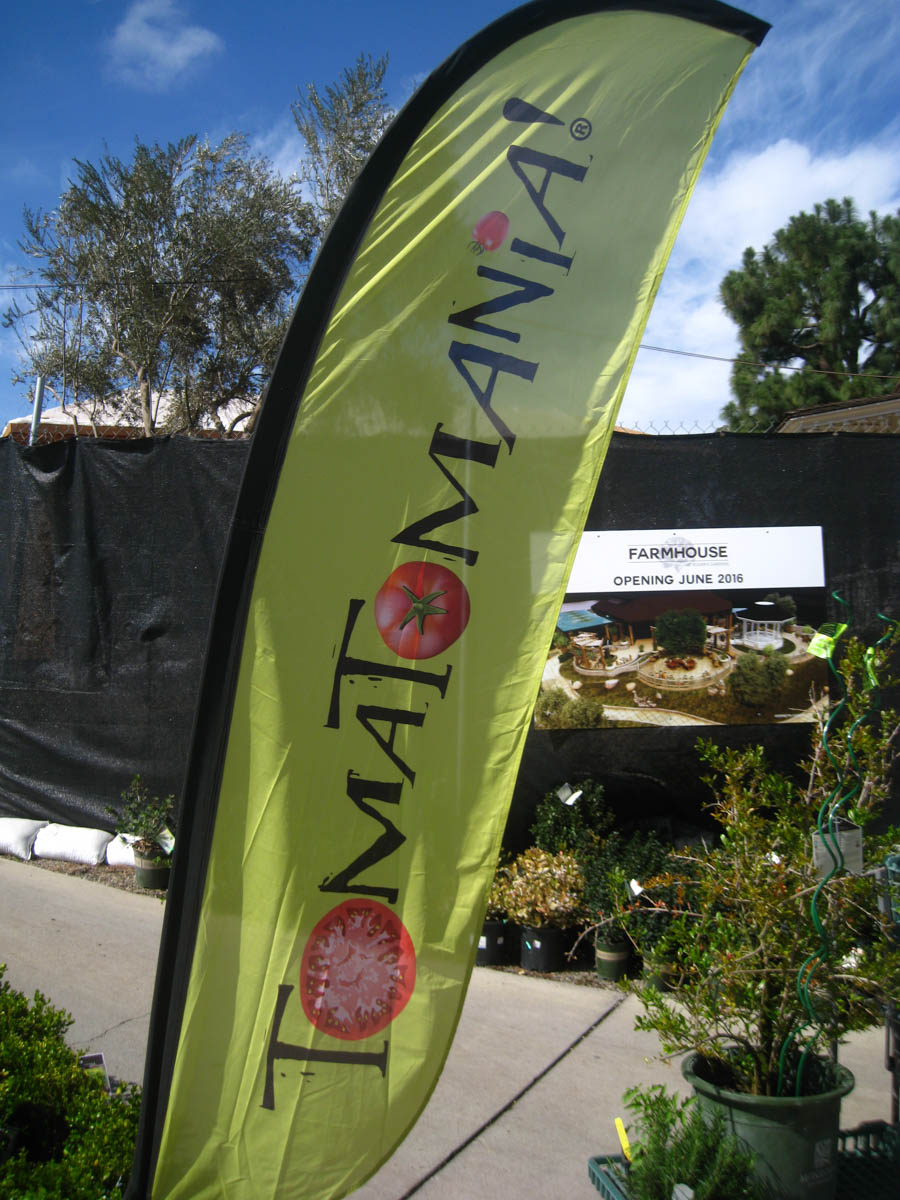
Great fun searching through the tomatoe plants for that special one!

Loaded up!
Back Home And Planting
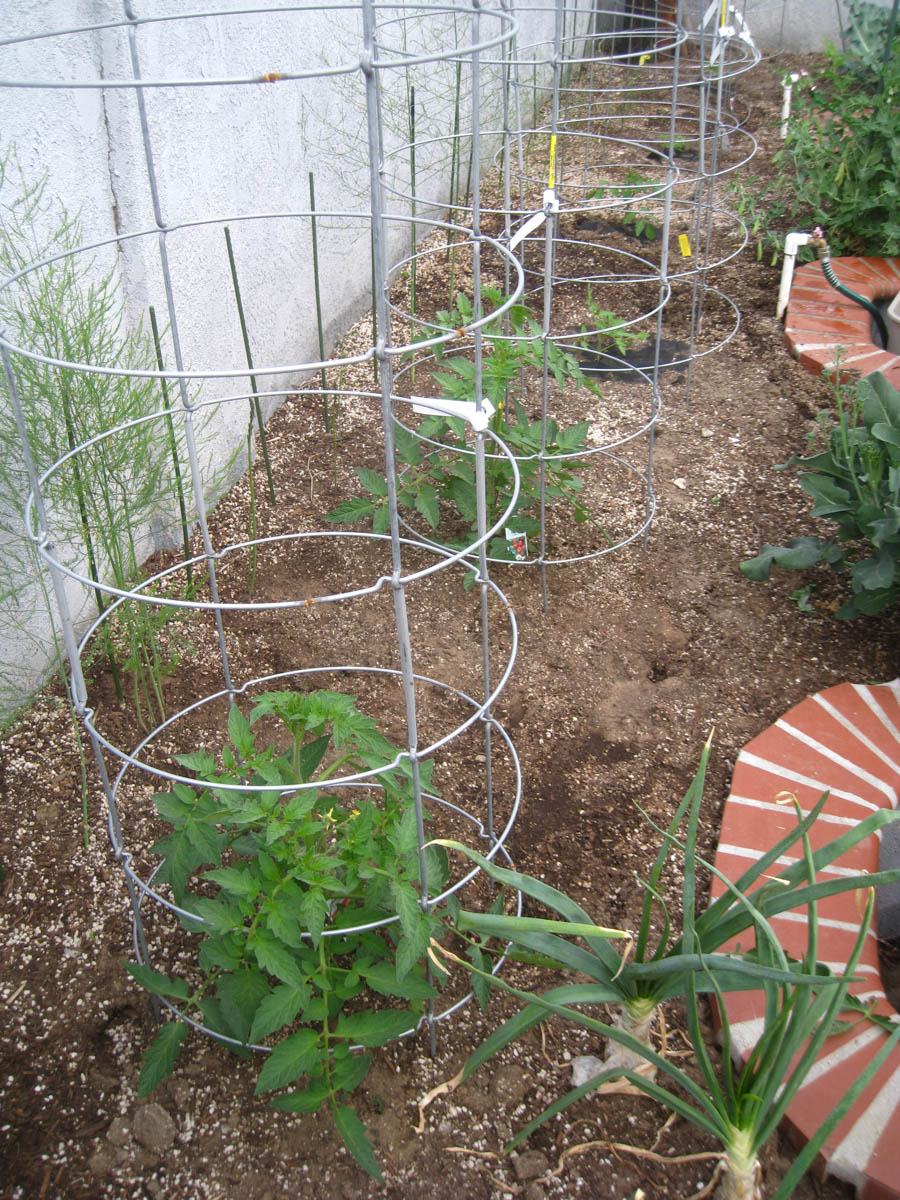
Every tomato has his or her own cage!
We use Texas Tomato Cages
We buy them from a place in Texas at about $35/cage but they last forever!

Readying for the expected rain storms coming
this weekend
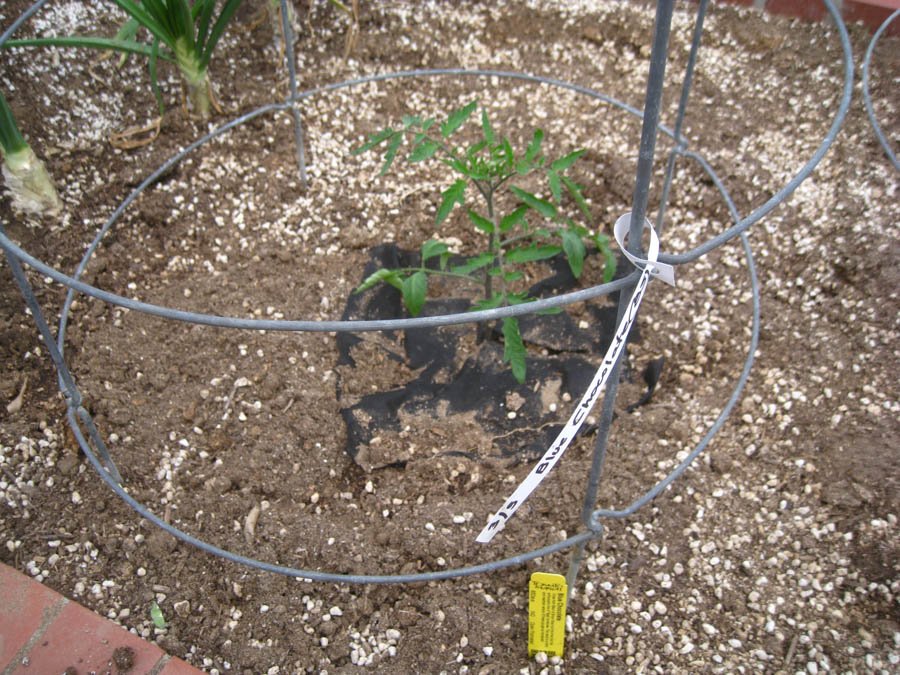
Look quickly... In a few weeks they will be 36 unches tall!
This little guys is a "Blue Chocolate!


The fava beans are doing well
Did You Know? - Broad beans have a long tradition of cultivation in Old World agriculture, being among the most ancient plants in cultivation and also among the easiest to grow. Along with lentils, peas, and chickpeas, they are believed to have become part of the eastern Mediterranean diet around 6000 BC or earlier. They are still often grown as a cover crop to prevent erosion, because they can overwinter and because as a legume, they fix nitrogen in the soil.
The broad bean has high plant hardiness; it can withstand harsh and cold climates.[8] Cold tolerance among fava bean cultivars varies, but most varieties winter-kill at temperatures below -9°C (15 °F) and even the most winter-hardy winter-kill at temperatures below -12°C (10 °F). Fava bean grows during cool weather when other vetches and clovers are relatively dormant, but does not tolerate heat well. Unlike most legumes, the broad bean can be grown in soils with high salinity, and a wide range of pH values (4.5–8.3) as well as in clay soil. However, it does prefer to grow in rich loams.
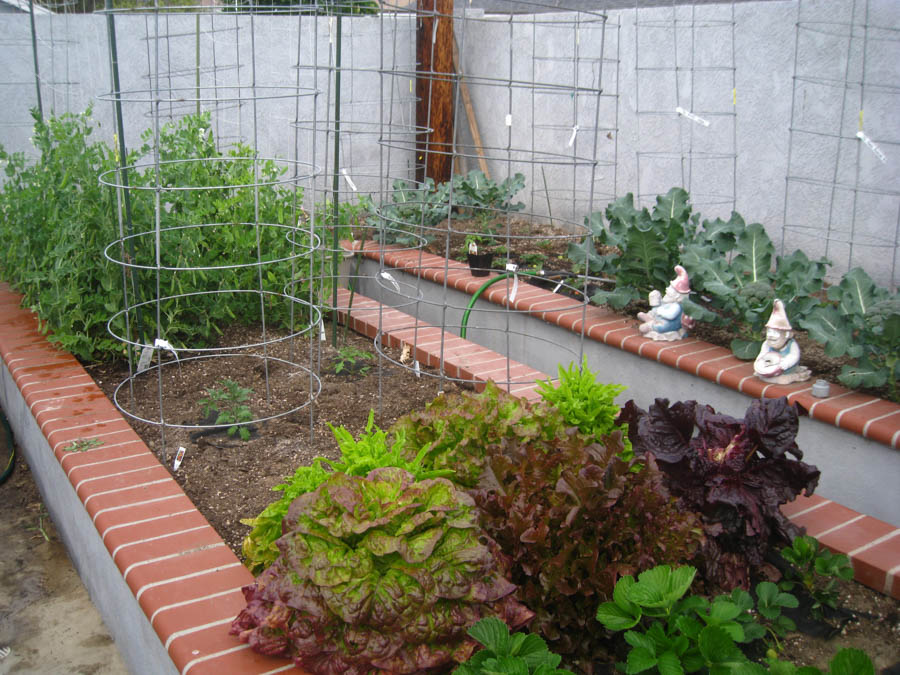
Cages everywhere!

We put two tomatoes in the fruit tree garden!
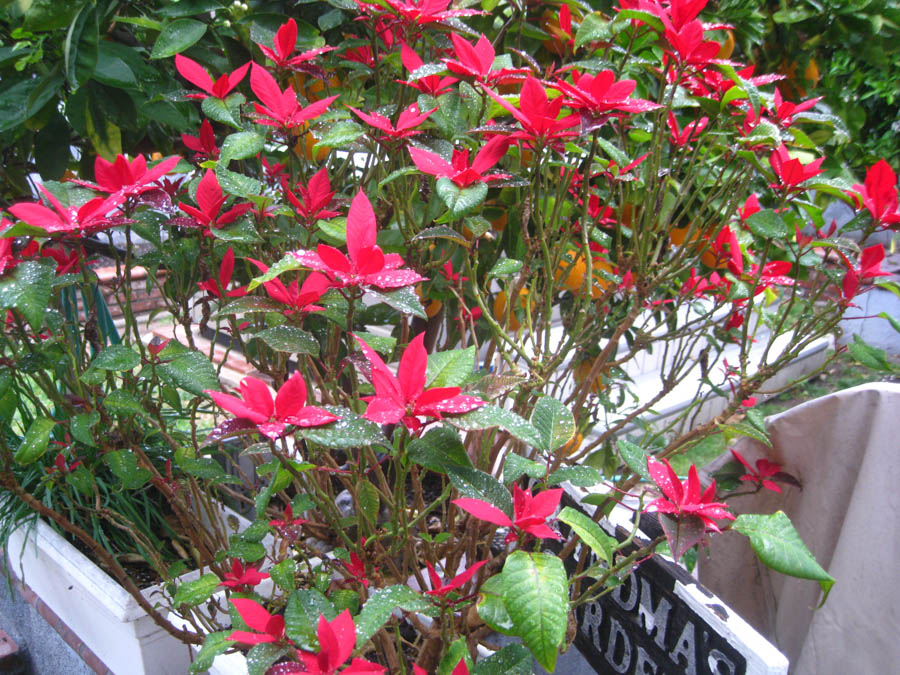
Yes! We have one flower in our garden!
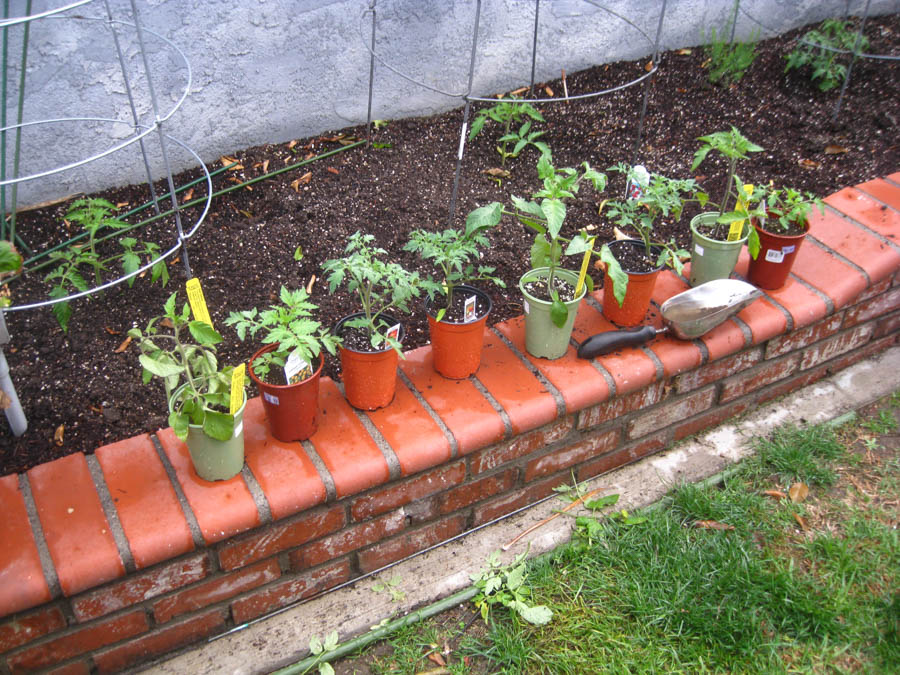
These guys are looking for a new home!

The orange trees are loving the water
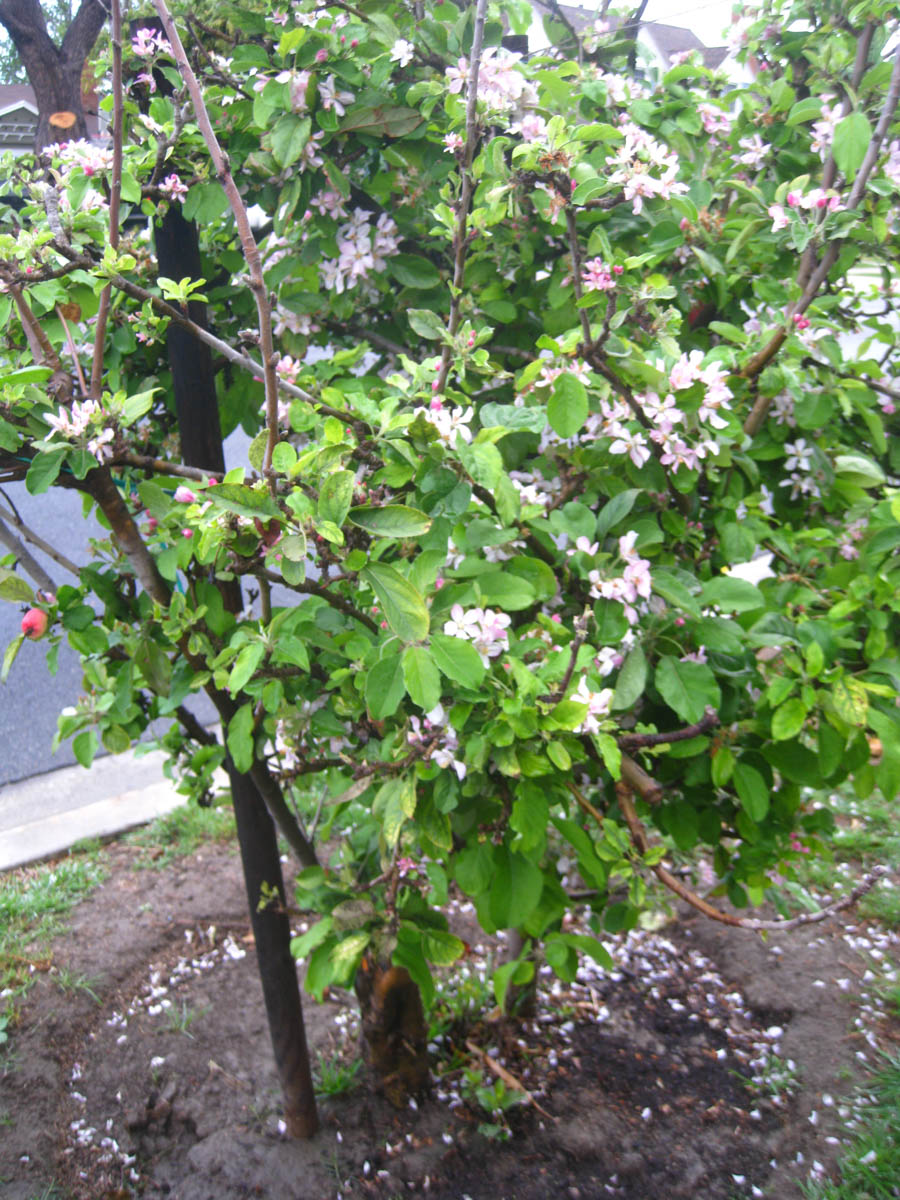
The apple tree is exploding with fruit!
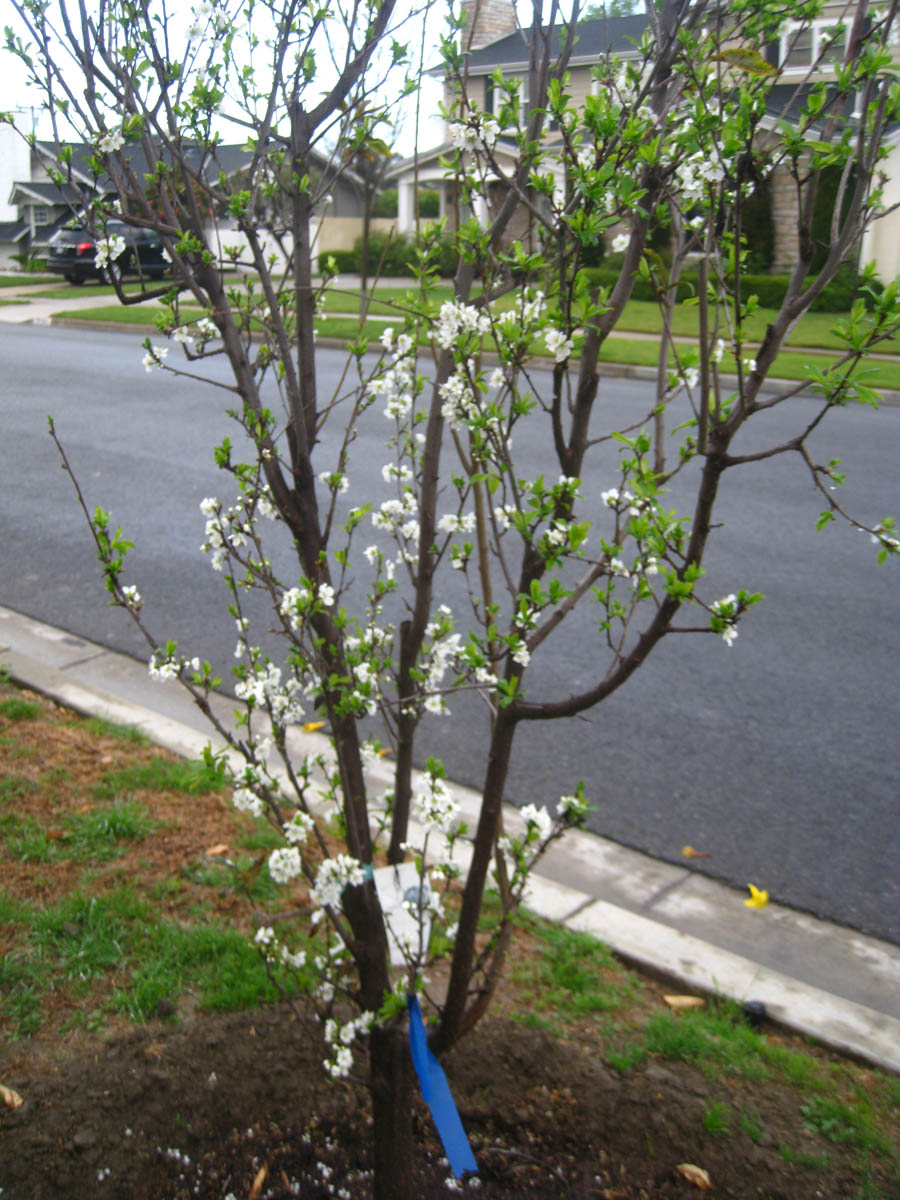
Plums are looking good!

Peas in the front and striong beans in the back!

Here comes the rain!

We are ready for St Patrick's Day!
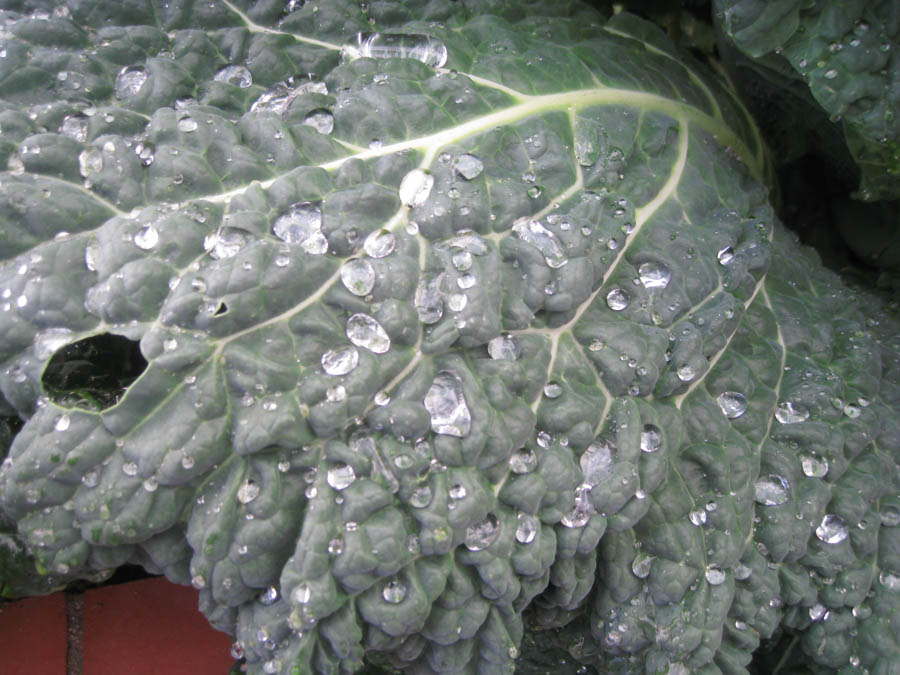
Wate beads up on the leaves
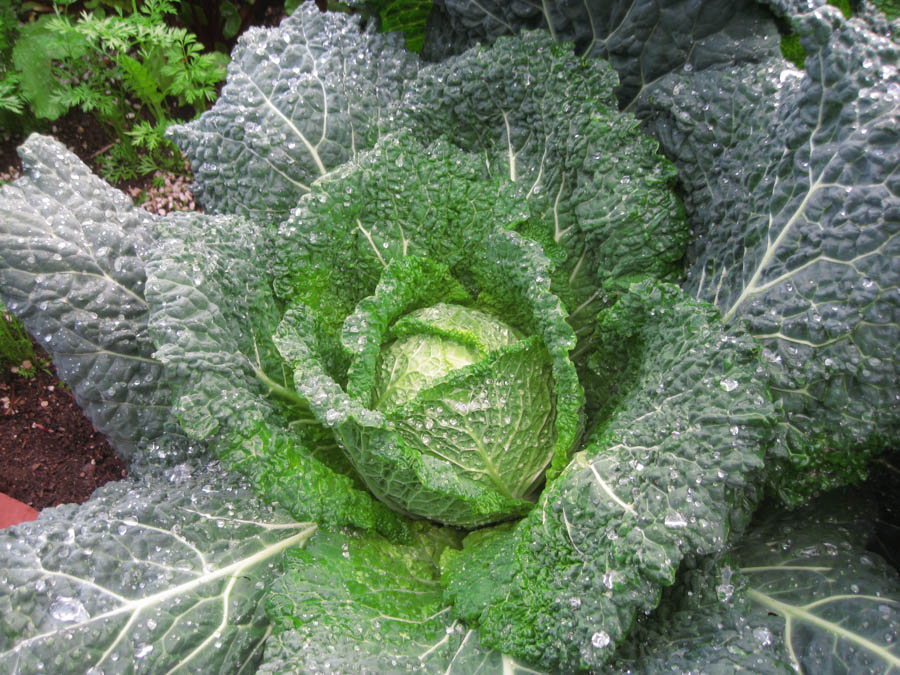
Looks yummy!
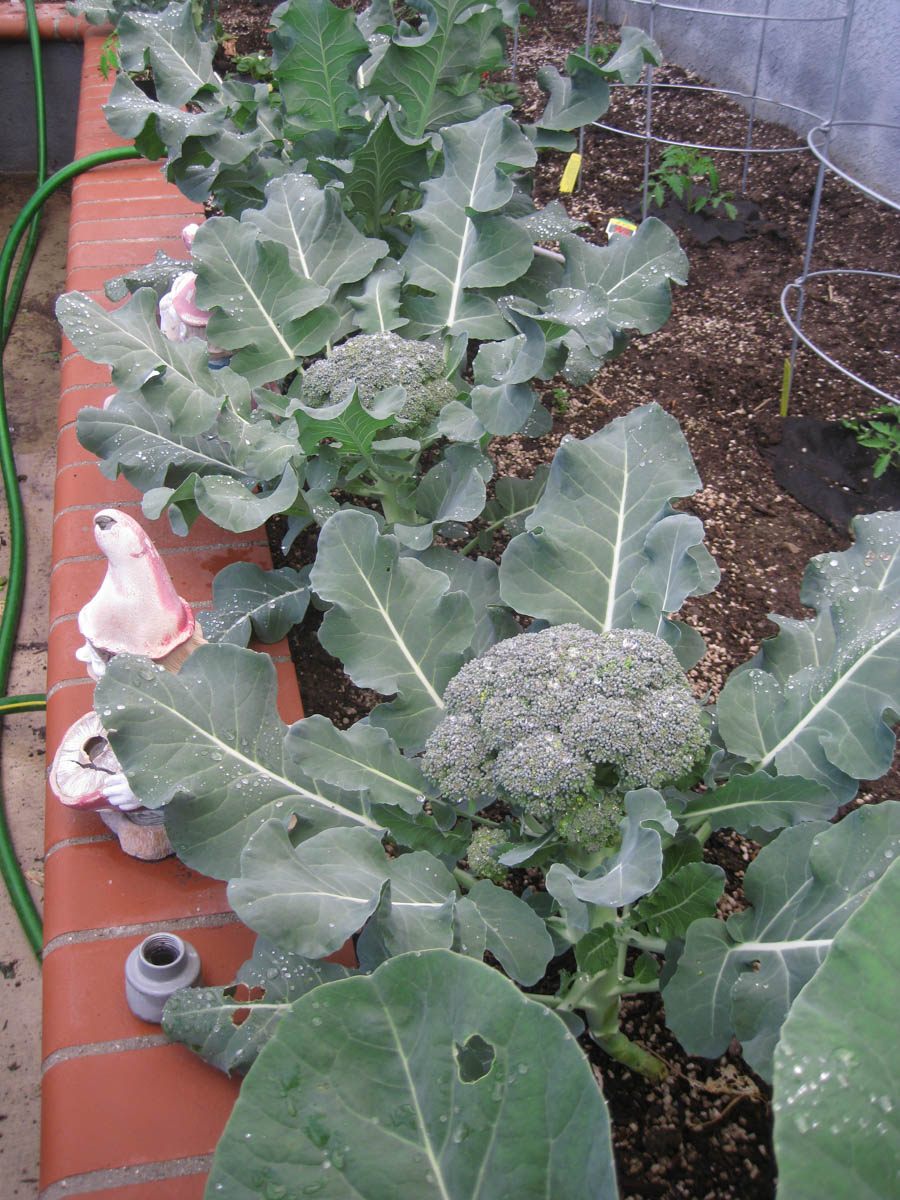
The brocholi are getting ready
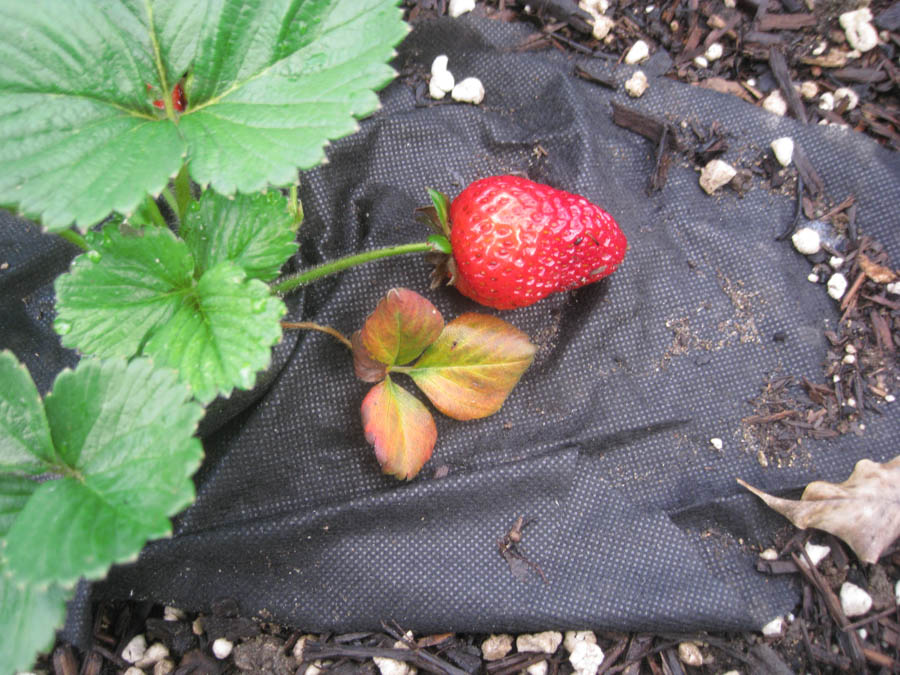
We love strawberries!
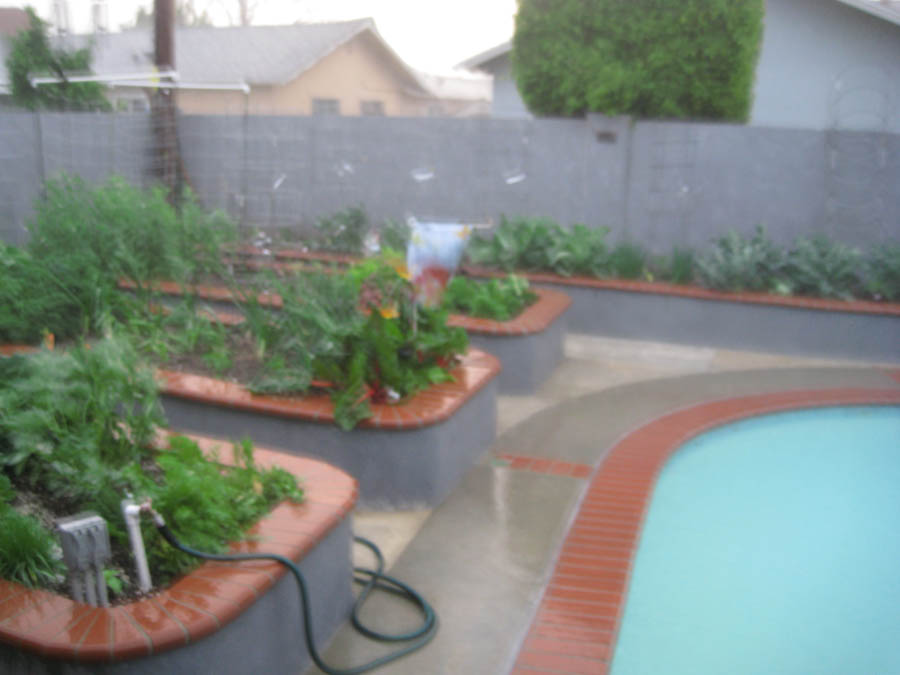
It was raining like mad this morning... I did NOT slide the door open die to the wind